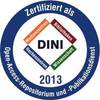Preview |
PDF, English
Download (224MB) | Terms of use |
Abstract
Semiconducting single-wall carbon nanotubes (SWCNTs) – nanoscale cylinders made entirely of carbon – hold potential for optoelectronics, optical biosensors, and high contrast imaging due to their stable and narrowband near-infrared (NIR) photoluminescence (PL). Upon covalent chemical modification with luminescent defects, the optical properties of SWCNTs can be significantly enhanced as new red-shifted excitonic emission features lead to increased PL quantum yields (PLQYs) and enable room-temperature single-photon emission. The continuous development of synthetic protocols for functionalization in aqueous environments and organic solvents has created numerous methods for tailoring the optical properties of SWCNTs to achieve specific properties. Far less progress has been made with regard to the methods for precise spectroscopic characterization of luminescent defects. Their density and distribution on the nanotube lattice is typically unknown. However, integration of SWCNTs into devices, single-photon sources and diagnostic tools requires precisely defined properties, e.g., single defects on individual SWCNTs to ensure sufficient purity of quantum emission. In addition to metrological aspects, the identification of parameters which determine sample performance can guide the rational design of synthetic strategies for brighter SWCNTs and discovery of novel properties of luminescent defects. This thesis introduces a robust method for the absolute quantification of luminescent defects in SWCNTs. Based on Raman spectroscopy and spectrally resolved PLQY measurements in combination with exciton diffusion models, this approach facilitates the identification of samples with maximum brightness for imaging applications or single defects for quantum light sources. The systematic study of small-diameter SWCNT species at different Raman laser excitation wavelengths yields a unified empirical expression, which enables the assessment of defect densities in a straightforward and reproducible manner for any excitation energy, and reveals a strong dependence of the defect-related Raman response on nanotube diameter. It is further shown that this absolute quantification approach can be used to distinguish different types of luminescent defects and to determine the presence of oxygen defect clusters as opposed to individual aryl defects on the nanotube lattice. Building upon the identification of favorable reaction conditions, photocatalysis is explored for functionalization of SWCNTs with luminescent oxygen defects. This strategy facilitates the introduction of a large number of luminescent defects with uniform binding configuration in concentrated samples, which makes them accessible for chiroptical spectroscopy. Consequently, this enables the first observation of chiral, defect-localized excitonic states in SWCNTs.
| Document type: | Dissertation |
|---|---|
| Supervisor: | Zaumseil, Prof. Dr. Jana |
| Place of Publication: | Heidelberg |
| Date of thesis defense: | 10 October 2025 |
| Date Deposited: | 29 Oct 2025 10:23 |
| Date: | 2025 |
| Faculties / Institutes: | Fakultät für Chemie und Geowissenschaften > Institute of Physical Chemistry |
| DDC-classification: | 540 Chemistry and allied sciences |









